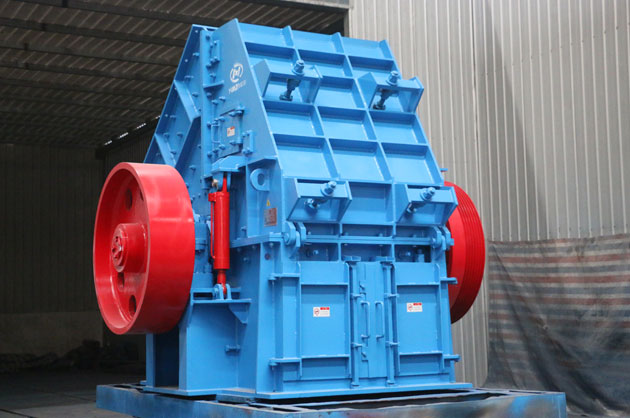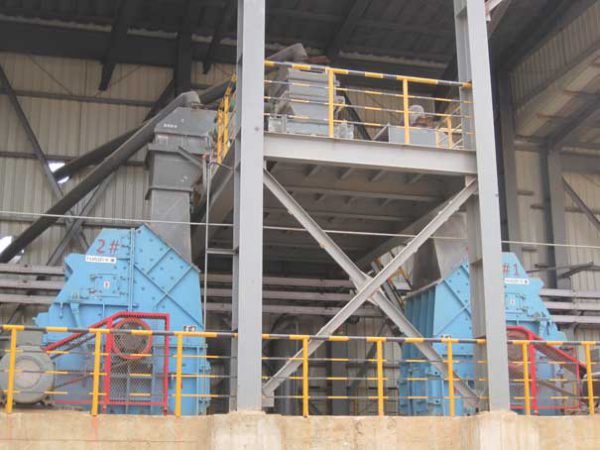Hammer crusher can be used to crush various medium hardness and brittle materials. It is widely used in cement, coal preparation, and power generation, building materials, metallurgy and compound fertilizer industries. It is a more commonly used crushing equipment. Among them, the hammer head of the hammer crusher is one of its important operating parts. The quality of the hammer head is directly related to the working efficiency of the machine. However, the hammer head is easy to wear, so it needs frequent maintenance and replacement. How to replace the hammer head?

Steps to replace the hammer head
- Preparation
(1) Check the integrity of the machine body support at the work site, and clean up the debris on the work site to ensure that the work site is unblocked.
(2) Prepare a complete crane, several horseshoe rings, crowbars, sledgehammers, wire rope sets and other tools and equipment.
(3) Thread the spare hammer head through the top welding nut on one side of the shaft to facilitate lifting and passing through the wire rope. The nut must be inspected by a special person and the welding must be firmly welded and the hammer head must be transported to the replacement location. - Open the cover
Open the cover, firmly support the cover with sleepers, lock the power outage, hang the power outage sign, and arrange a special person to look after the switch. Open the side of the crusher to replace the special end plate for the hammer, removes the special fixing baffle bolt for the hammer shaft, and connects the shaft pin with a special tool for removing the hammer. - Remove the old hammer
Turn on the special appliance to slowly exit the hammer shaft, use a horseshoe ring to weld the nut on the old hammer, and connect it with the horseshoe ring with a wire rope. Use a crane hook to lift the old hammer; use a sledgehammer or crowbar to adjust the hammer at any time. Avoid jamming the hammer, and coordinate internally and externally to strictly prohibit blindly picking when the hammer is stuck. - Install a new hammer
After all the hammers are lifted out, at the same time the spare hammers are hoisted into the rotor of the crusher by a crane, ready to install new hammers. Turn on the special appliance and slowly push into the hammer head shaft and the inside and outside are well matched. Use a crowbar and sledgehammer to adjust the position at any time, and beat the hammer head to adjust the position to avoid misalignment of the shaft and the hammer pin hole. Place the new hammer heads in each row at a suitable position, rotate the rotor and fix it, and prepare to disassemble and install the hammer heads in the next row. - Cleaning up
After all the new hammers are installed, the machine will be tested and cleaned up. Put the fixing screws on the end cover of the rotor. Adjust the belt for the manhole door and put on the guard. Check the rotor and power on for trial operation. Clean up the tools and tools on the job site and recycle old hammers.

Precautions for replacing the hammer head
- Clean up the materials in the crusher mouth before replacing the hammer head. Place the rotor disc of the crusher to a suitable position and fix it.
- Be sure to check the integrity of the support at the work site before operation. If the support is not well handled in a timely manner, it is strictly forbidden to work in a location where the support is not good.
- Select the lifting point according to the position of the center of gravity of the equipment to ensure the balance of the equipment when lifting, and no large swings will occur. The lifting angle when the guide chain is lifted shall not be greater than 12°.
- When lifting heavy objects, it is strictly forbidden to hang them in the air for a long time. If the operation needs to be stopped halfway, the road wood must be placed under the equipment to support the equipment.
- During the lifting process, the lifting object should be stable and stable, and the operation should be stable, and it is strictly forbidden to pull it hard. The operator must pull it steadily without impact, and the lifting equipment must be balanced during the lifting process.
- If it is found that the lifting does not move or jams during the lifting process, handle it before lifting it, and it is strictly forbidden to pull it.
- When the personnel lift the equipment, they must act in the same way; rise and fall at the same time, and do a good job of mutual insurance and joint insurance to prevent bumps.

